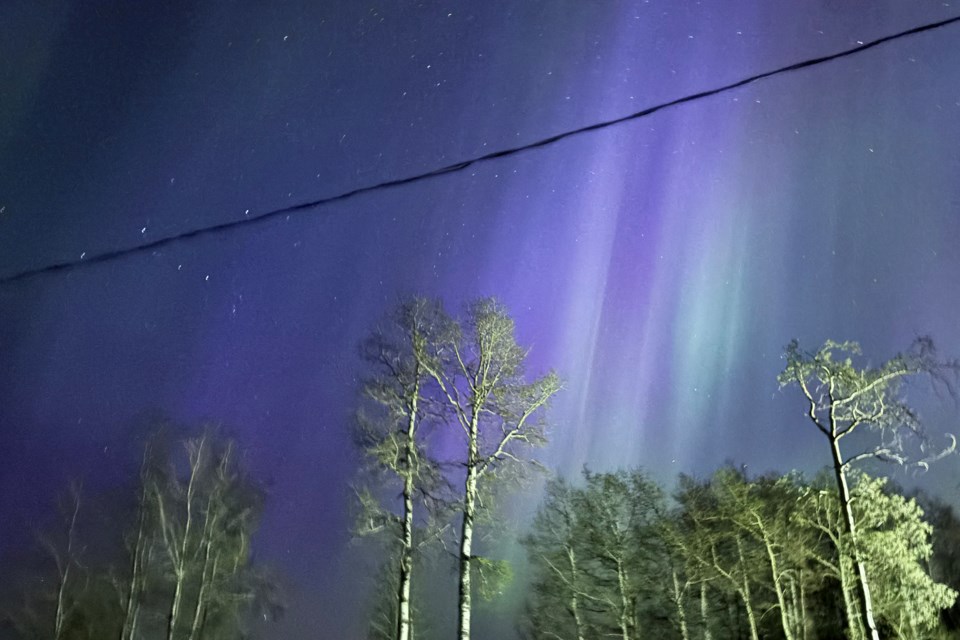MOUNTAIN VIEW COUNTY - Charged particles launched along Earth's magnetic field collided with gases in Earth's upper atmosphere Friday night and early Saturday morning, lighting up Central Alberta skies with aurora borealis.
At 7:10 p.m. on May 10, the University of Alberta’s AuroraWatch issued a red alert indicating there was a very good chance (>~70%) of auroral activity.
The alert was in effect until 7 a.m. on May 11.
“This weekend (May 11–12, 2024) has the potential to be the best chance for us to view the aurora for many years. This week a huge sunspot cluster has been very active and has generated multiple coronal mass ejections. All these ejected particles will start interacting with the Earth's magnetic field this weekend, leading to (potentially) the best chance to witness the aurora for years. And the weather should be fine. And the mosquitoes are not out yet! And it should get dark at a reasonable hour!” the alert said.
In many areas of the province, the northern lights could be seen Friday night and into the early morning hours of Saturday.
According to the Canadian Space Agency, the northern lights most often occur at altitudes of 100 to 300 kilometres in the atmosphere but can sometimes occur at altitudes of up to 600 kilometres from the ground.
The agency says the colours of the northern lights are determined by a number of factors including the composition of gases in Earth's atmosphere, the altitude where the aurora occurs, the density of the atmosphere and the level of energy involved. They include:
• Green: Green is the most common colour seen from the ground and is produced when charged particles collide with oxygen molecules at altitudes of 100 to 300 kilometres.
• Pink and dark red: Occasionally, the lower edge of an aurora will have a pink or dark red fringe which is produced by nitrogen molecules at altitudes of around 100 kilometres.
• Red: A bit higher in the atmosphere (at altitudes of 300 to 400 kilometres), collisions with oxygen atoms produce red auroras.
• Blue and purple: Hydrogen and helium molecules can produce blue and purple auroras but the agency says these colours tend to be difficult to see against the night sky.



